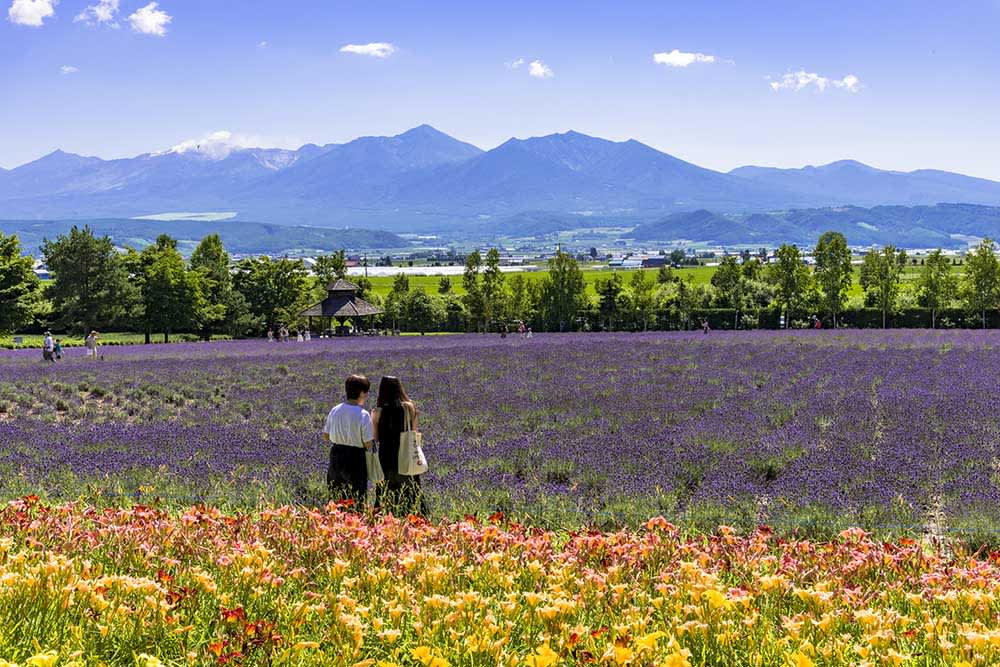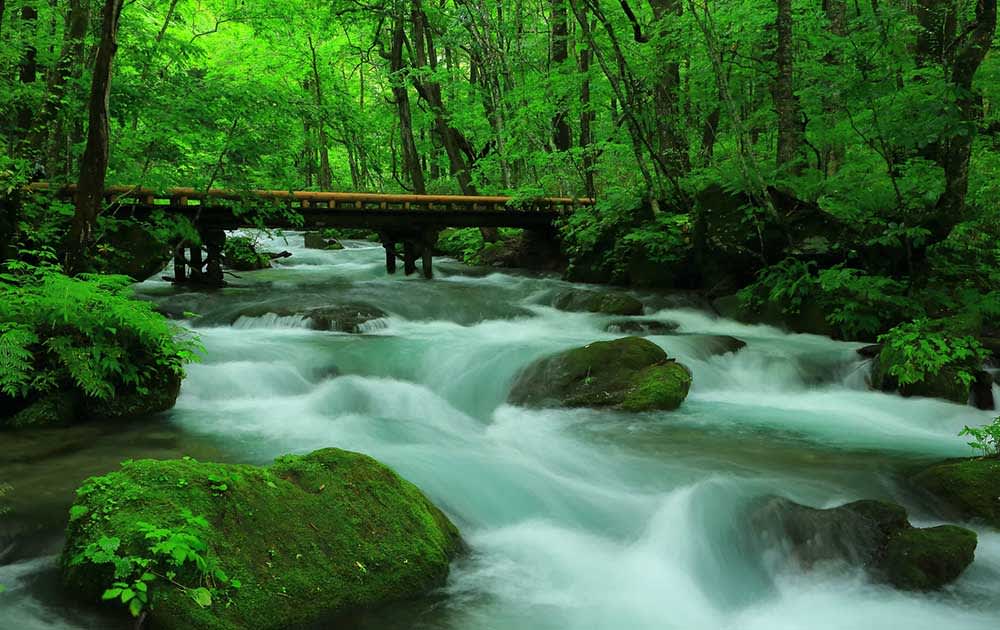A guide to planning your dream Japan road trip
Do you like moving at your own pace without worrying about bus and train schedules? Would you rather focus on the journey and find off-the-beaten-path gems as you go? If so, a road trip might be the best way for you to enjoy Japan, and with a little planning and research, it’s easy to have your own incredible car or van life experience! In fact, several factors—such as great public safety, good roads, and availability of clean and safe roadside stations (Michi-no-Eki in Japanese) and public baths—actually make Japan a fantastic destination for this kind of travel. Here are some details on how to plan a road trip around Japan, from logistics to recommended destinations.
The first step is to make sure you can legally drive in Japan. For this, you need an International Driving Permit, or IDP for short. Fortunately, if you have a valid American license, AAA can issue you one for $20 in as little as half an hour in-office or a few weeks by mail, and all you need is a short application form and 2 photo IDs. This must be done before you leave for Japan.
The next step is to rent a vehicle. There are a variety of rental agencies in Japan, with some of the largest being Nissan Rent a Car, Times Car Rental, Nippon Rent-a-Car, Toyota Rent-A-Car, NICONICO RENT A CAR, JR (Japan Railways) Rent-A-Car, and Japan Campingcar Rental Center. It is worth checking their websites as well as searching aggregate websites for pricing and deals. In general, prices range from 5,000-31,000 yen per 24 hours.
| Size | JPY/Day |
| Sub-compact (1,000-1,300cc) | 5,000 – 11,100 |
| Compact (1,500-1,800cc) | 9,000 – 13,500 |
| Intermediate (2,000cc) | 14,000 – 30,000 |
| Standard (3,000cc) | 29,500 – 31,000 |
Unlike the United States, driving in Japan is on the left and you will want to familiarize yourself with road signs and regulations before beginning your trip. Many rules such as yielding to pedestrians and using seatbelts are universal, but it is worth noting that there is a zero-tolerance policy towards alcohol (you cannot drive after even a single drink), so plan accordingly. Parking may be challenging in some areas, and you generally cannot park along streets. If you need to park temporarily while asking for directions or checking your map, always use your hazard lights.
Expressways in Japan have tolls, which can generally be paid by cash. However, it is a good idea to get an ETC (Electronic Toll Collection) card if possible. This allows you to move swiftly through toll booths (generally, there will be an ETC-only lane) and also provides a small discount. In addition, there are some expressway entrances which are ETC only. Google maps will generally not distinguish these from regular expressway entrances. If you arrive at one without an ETC card, you will not be able to enter, which can cause inconvenience. Many car rental agencies will also rent you ETC cards, but make sure to request it in advance and book a car with an ETC on-board unit. You will then settle your toll payments with the company when you return your vehicle. There are also region-specific expressway passes which offer more attractive rates for visitors, so it is worth looking into these if you will be traveling primarily in one area.
Once you have sorted out the logistics of your car rental and familiarized yourself with the rules of the road, it’s time to pick your destinations.
Kirishima-Kinkowan National Park, Kagoshima
Located in the south of Kyushu, the southernmost of Japan’s main islands, Kirishima has an air of mystery and seclusion, with gorgeous rocky coastlines, lush forests, and an active volcano creating a unique ecosystem. Relax in heated sand along the beautiful coastline, where you can sometimes spot dolphins. In the more mountainous northern area of the park, visit Kirishima Onsen, a volcanic hot spring resort fed by twelve different sources. This makes for distinctive baths, some sulphuric, some containing volcanic mud, and some which are naturally fizzy. A soak will soothe sore joints and leave your skin feeling silky, making it a great way to wrap up a day of hiking in the surrounding mountains. There are excellent day-use baths as well as traditional ryokan inns for a luxurious overnight stay complete with breakfast and dinner.

The Kirishima mountains offer a variety of walks and hikes, including incredible landscapes such as Mt. Karakuni, a volcanic crater and the tallest mountain in the range at over 5,500 feet. Excellent tent-camping and cabin facilities are available, which is ideal if exploring the area by car. From Fukuoka Airport, it takes about 2 hours and 30 minutes to drive to Kirishima. For more ambitious road trippers, rent a car from Osaka Airport and drive 10 hours and 30 minutes, or from Narita airport and drive 16 hours and 17 minutes. Both routes are filled with beautiful scenery and ample sightseeing destinations to stop and stay the night along the way.
Furano, Hokkaido
Located in the heart of Japan’s northernmost island of Hokkaido, Furano is nicknamed ‘the navel town’ due to its location—and even boasts a humorous festival inspired by the name! A rental car is the best way to explore all the remote nature Hokkaido has to offer, and Furano is the perfect base, characterized by wide, rolling hills and straight roads that are easy to drive. The town is a major cultivator of lavender, and in summer, the vast purple fields set against a backdrop of distant mountains are a beautiful attraction.

Other flowers, such as brilliant red poppies and yellow sunflowers, are also cultivated in Furano, leading the National Route 237 which passes through the town to be nicknamed ‘The Flower Road’. Furano also produces its own wine. A winery offering free tastings overlooks the town, and a wine festival is held in September. In winter, the area is a popular destination for skiing.
Oirase Gorge, Tohoku
Oirase Gorge is located in the northernmost part of Japan’s main island, on the border of Aomori and Akita prefectures. The Tohoku region has fantastic nature and many old-fashioned hot springs and is an excellent area to explore by car or RV. Oirase Gorge is remote, pristine, and the perfect destination for hiking, cycling, and forest bathing. The 8.69-mile path in Oirase Gorge winds along a stream through forests of beech, oak, maple, and cedar. The deciduous woodland is a wonderful place to experience fall foliage in October, and it is also beautifully lush in summer.

Winter is snowy, and some of the waterfalls freeze. If you cycle the trail, you can rent a bike at one end and drop it off at the other. The trail ends at Lake Towada where you can enjoy spectacular scenery, sightseeing cruises, fishing, or relaxing and eating local food like red salmon and smelt. After visiting Oirase Stream, check out Tsuta Onsen with its 1,000-year history or Sangayu Onsen, which is known for its therapeutic waters.
There are a huge number of amazing destinations we haven’t covered here, so we invite you to explore online and start planning your dream road trip in Japan. Regardless of where you go, you’re sure to enjoy breathtaking natural scenery, hidden hot springs, and quaint villages away from the usual tourist crowds, allowing you to experience Japan like a local.



















































